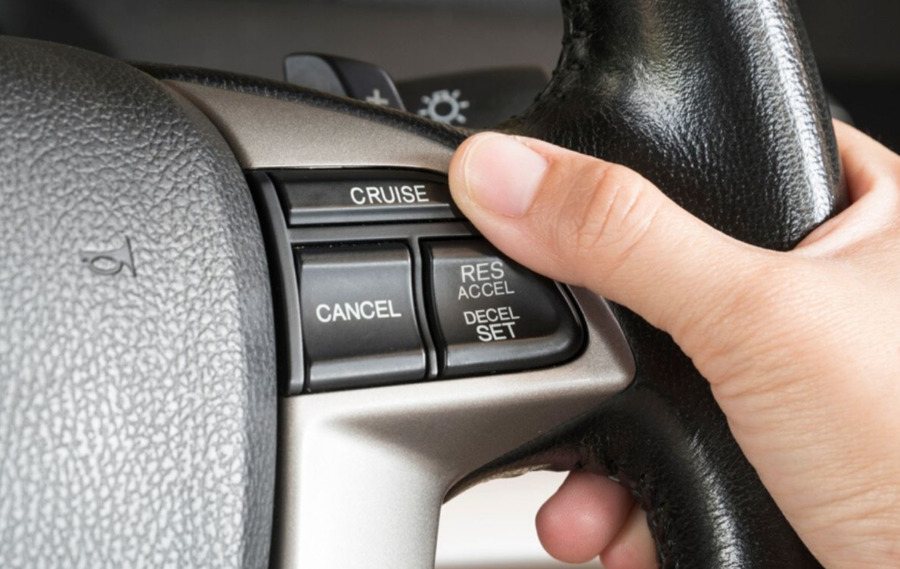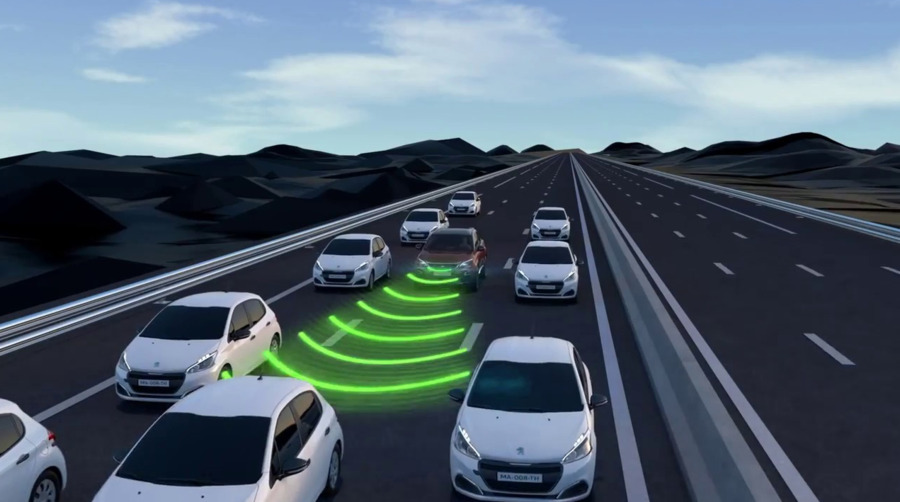Introduction to Cruise Control
Cruise control is a sophisticated feature incorporated into modern vehicles that automates speed control, allowing the vehicle to maintain a set speed as determined by the driver. This system significantly enhances driving comfort, particularly on long journeys, by relieving the driver from continuous throttle management. Beyond comfort, cruise control is instrumental in enhancing fuel efficiency and overall vehicle safety, representing a critical advancement as the automotive industry strides toward technological perfection. Additionally, the integration of cruise control in vehicles available for car hire in Dubai offers an added value, elevating the driving experience for customers who opt for car hire solutions in the region, making long-distance travel more enjoyable and less taxing.
Historical Development of Cruise Control
Early Speed Control
The concept of regulating vehicle speed mechanically dates back to the early 20th century. Early automobiles, such as the Wilson-Pilcher, employed manual levers that allowed drivers to adjust and set the engine’s speed. A notable advancement came in 1908 with Peerless’ integration of the flyball governor, a device that used centrifugal force to regulate engine speed automatically. This innovation was particularly effective in maintaining consistent speeds across varying road conditions, marking a significant step forward in automotive technology.
Modern Cruise Control
Developed by the inventive mind of Ralph Teetor in 1948, modern cruise control was born out of necessity and frustration with inconsistent vehicle speed. This new system was commercialized with its debut in the 1958 Chrysler Imperial. The adoption of cruise control was further accelerated by the imposition of wartime speed limits during World War II, which limited vehicles to 35 mph to conserve fuel, making the efficiency of cruise control particularly appealing.
Technological Advances
The evolution of cruise control continued robustly through the mid-20th century. In 1965, American Motors Corporation introduced an automatic speed control system that could be easily integrated into their vehicle lineup, enhancing user convenience. The technological landscape of cruise control was revolutionized in 1968 by Daniel Aaron Wisner, who introduced the first electronic cruise control system. This system utilized electronic signals to maintain a set speed with greater accuracy, and by the 1980s, this technology was being integrated into more comprehensive automotive systems by Motorola, broadening the functionality and applicability of cruise control within the automotive industry.
Mechanism of Action of Cruise Control
Cruise control systems operate by using a network of sensors and electronic controllers that automatically adjust the vehicle’s throttle position to maintain a predetermined speed. Activation is straightforward: the driver selects a desired speed, and the cruise control system takes over the throttle control to keep the speed constant. These systems are particularly integrated with the vehicle’s electronic throttle control (ETC) to ensure smooth and precise speed management.

Types of Cruise Control
Passive Cruise Control
Passive cruise control, the simpler form of the technology, allows a vehicle to maintain a set speed until it is overridden by the driver, either through braking or manual adjustment. This system is particularly suited for long drives on highways where traffic flow is consistent and there are few stops.
Active (Adaptive) Cruise Control
Building upon the capabilities of passive cruise control, adaptive cruise control employs advanced radar or laser sensors to monitor traffic conditions ahead of the vehicle. It automatically adjusts the speed to maintain a safe following distance, slowing down or speeding up according to the flow of traffic. This proactive feature significantly enhances road safety by adapting to dynamic traffic conditions without driver intervention.
Advantages of Cruise Control
Cruise control offers several notable benefits: it optimizes fuel consumption by maintaining a steady speed, reduces driver fatigue by minimizing the need to manually control the throttle, and improves safety with adaptive systems that adjust speeds based on surrounding traffic conditions. Furthermore, it aids in adhering to speed limits, thereby reducing the likelihood of speeding infractions, and provides a more relaxed driving experience on suitable long-distance routes.
Disadvantages of Cruise Control
Despite its benefits, cruise control is not without drawbacks. The system can malfunction or disengage unexpectedly, requiring periodic maintenance and checks. Sensor calibration is essential, especially following repairs or accidents that involve front-end damage. Moreover, cruise control may perform suboptimal in conditions of limited visibility, on twisty roads, or under rapidly changing traffic speeds, potentially increasing the risk of accidents if not used cautiously.

Cruise Control in Dubai with Al Mizan Car Rental
For those in Dubai, Al Mizan Car Rental offers vehicles equipped with the latest cruise control technologies, such as the 2021 Kia Soul, which features an intelligent cruise control system with emergency braking and collision avoidance capabilities. Renting this model costs 510 AED for a week or 80 AED for a day, making it an accessible option for experiencing cutting-edge automotive technology. Al Mizan Car Rental prides itself on a broad selection of reasonably priced vehicles, enhancing the driving experience for residents and visitors alike.
Cruise control systems continue to evolve, increasingly integrating with other advanced driver-assistance systems (ADAS) to pave the way towards fully autonomous driving. As these technologies advance, they promise not only enhanced driving ease but also significantly improved safety standards, redefining our relationship with driving and vehicle management.

Skydiver, vegan, audiophile, Saul Bass fan and screen printer. Producing at the sweet spot between simplicity and computer science to create not just a logo, but a feeling. Let’s chat.
